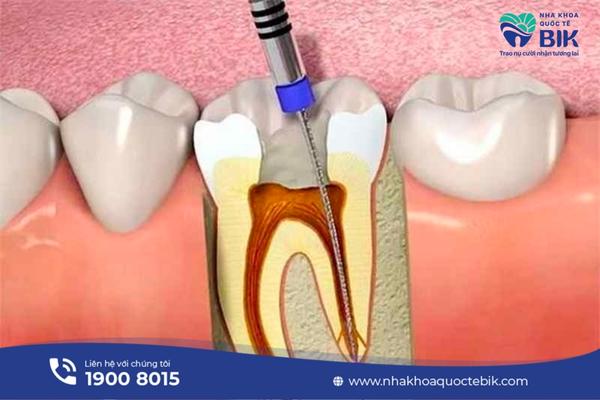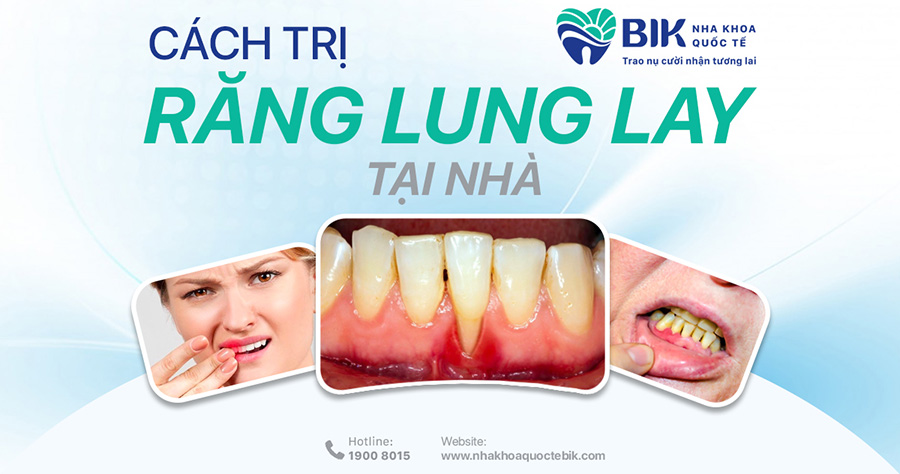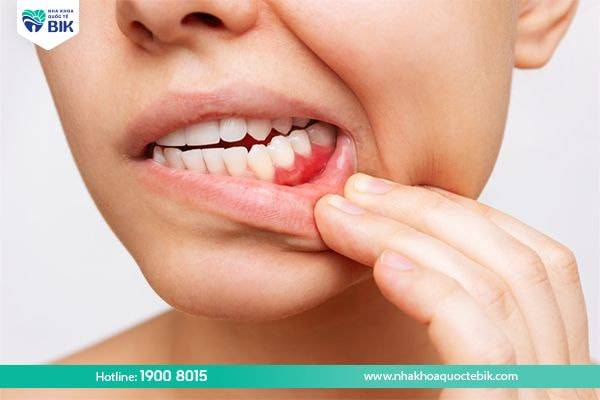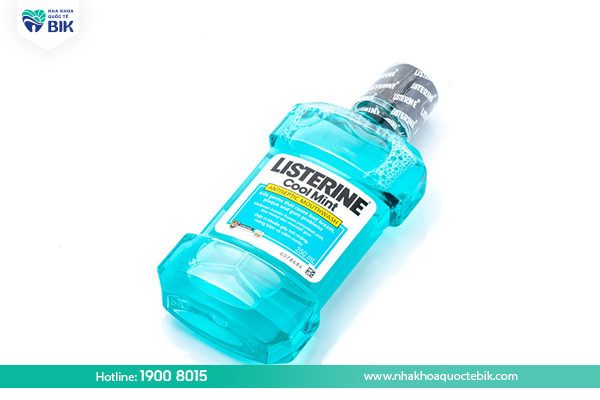Tooth decay is a common problem in dentistry, affecting the aesthetics and function of teeth. If not detected and treated promptly, tooth decay can develop into other serious problems such as dentin decay, pulp decay and even permanent tooth loss. Therefore, let’s learn how to effectively treat tooth decay through this article from BIK International Dental Clinic.
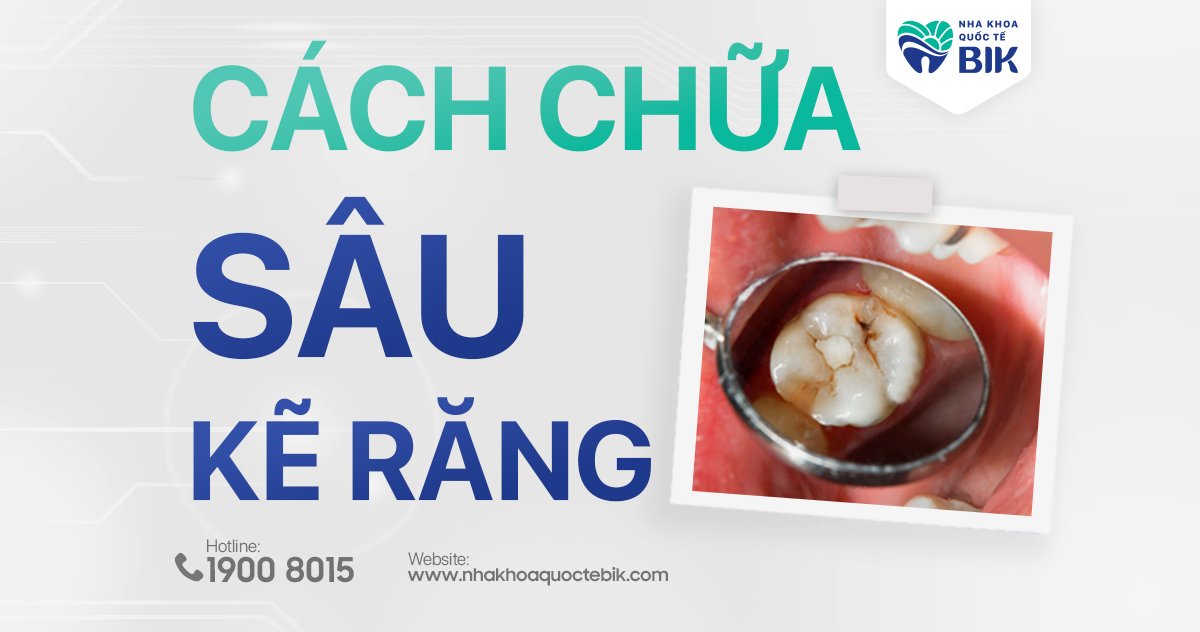
Signs of tooth decay
Tooth decay is a common problem, a process of destroying the hard tissue of the tooth due to bacteria, plaque and poor oral hygiene habits.
One of the symptoms of tooth decay is that you may or may not see cavities between two teeth. Often seen in this position is a dark brown color, a feeling of pain when eating and drinking and bad breath due to bacteria accumulation, affecting the quality of life and confidence when communicating.
Common Causes of Tooth Decay
There are many common reasons for tooth decay, including:…
Due to the structure and organization of the teeth on the jaw
The structure and arrangement of the teeth on the jaw play an important role in causing tooth decay.
If you have weak enamel, missing enamel, or worn tooth necks, your risk of tooth decay increases. For people with crowded, crooked, or misaligned teeth, the risk of tooth decay is also high because food easily sticks and is difficult to clean.
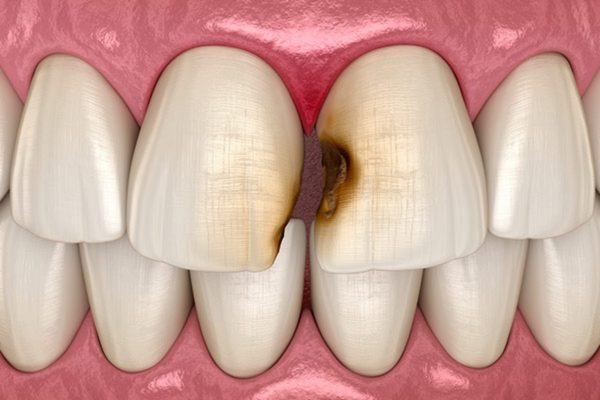
Incorrect oral hygiene
Improper oral care and consumption of sugary foods are the reasons why food accumulates in the teeth, creating conditions for bacteria to grow, causing serious interdental caries.
Unscientific diet
Regular consumption of products such as candy, sweet drinks, etc. will create a lot of sugar in the mouth. Sugar will turn into acid and damage tooth enamel, especially between teeth, leading to an increased risk of interdental caries.
Bad habits in life
Using teeth to open bottle caps or eating foods that are too hard often causes damage to the tooth structure, especially in the biting edge area. This opens up the opportunity for bacteria to penetrate the teeth and cause tooth decay.
How to treat tooth decay at home
If the tooth decay has just begun to develop, you can take some of the following measures to treat it at home.
Using young guava leaves
Guava leaves have high antibacterial and anti-inflammatory properties, and are often used to treat dental problems, including tooth decay.
How to do it:
- Take 7 – 10 young guava leaves, wash them and boil them with water.
- Use the concentrated guava leaf solution to rinse your mouth at night, helping to reduce pain caused by tooth decay.

Use betel leaves
Betel leaves do not contain Flavonoid, an anti-inflammatory and antioxidant active ingredient, which helps to disinfect, prevent tooth decay and effectively relieve pain.
To perform this method, you need to prepare betel leaves, turmeric, and Indian almond buds, then wash and crush them and mix them with 20ml of white wine. Mix this mixture with water, then use it to rinse your mouth or dab it on the cavity between your teeth with cotton. Finally, rinse your mouth with clean water.
Using yellow chrysanthemum
Yellow chrysanthemum has effective anti-inflammatory and antibacterial effects, so when treating cavities between your teeth at home, you should not ignore this ingredient.
How to do it:
- Take 4 – 6 yellow chrysanthemum flowers, wash them, soak them in salt and drain.
- Every day, chew a few petals to kill bacteria that cause tooth decay.
- Finally, rinse your mouth thoroughly with clean water.

The most effective way to treat tooth decay at the dentist
When visiting the dentist, the treatment will be prescribed by the doctor depending on the condition of the teeth and mouth.
Filling between teeth
In cases of mild tooth decay, small and not too serious cavities, and no need to remove too much tooth tissue, tooth filling can be used.
When performing this method, the dentist will clean and remove the decayed tooth tissue. Then, they will use special materials to seal the cavity, prevent the progression of tooth decay and help the tooth restore chewing function and aesthetics.
Veneer Porcelain Bonding
To fix small cavities between teeth, Veneer porcelain bonding is an effective method.
This process involves cleaning the decayed tooth area and grinding a thin layer on the outer surface of the tooth. Then, the porcelain veneer will be firmly glued to the tooth surface with a special glue, so that the veneer hugs the inside of the tooth.
Veneer porcelain bonding does not cause much damage to real teeth and helps preserve them as best as possible. Porcelain veneers are thin so they do not affect the chewing function of the teeth and the color of real teeth is also naturally recreated, bringing true beauty.
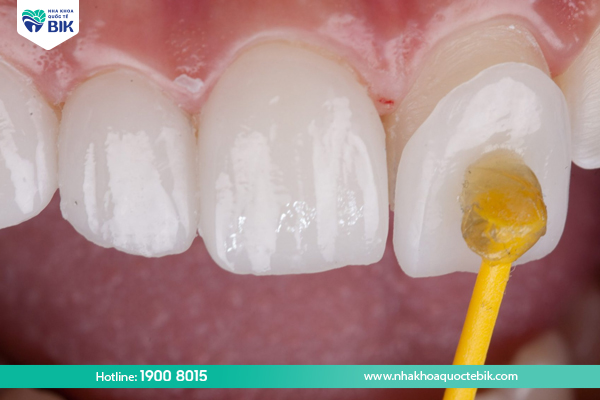
Porcelain crowns
This method is used for cases of severe tooth decay with accompanying pulp damage.
Before placing porcelain crowns, the doctor will perform root canal treatment to prevent pain and infection. After that, the doctor will grind down a part of the natural tooth to create space for placing the porcelain crown. After being covered with porcelain, the tooth will be perfectly restored, ensuring the ability to chew comfortably like a real tooth.
Preventing tooth decay
To prevent tooth decay in the tooth gap, you need to pay attention to your diet and oral hygiene.
- Brush your teeth regularly twice a day with a soft-bristled toothbrush, brushing gently in a circular motion.
- Choose a toothpaste containing fluoride to protect your teeth from bacteria that cause tooth decay.
- Use dental floss and mouthwash before brushing to clean between your teeth and kill bacteria in your mouth.
- Eat lots of fresh green foods and drink enough water every day. Avoid tough, hard, spicy, hot or sugary foods to protect tooth enamel.
- Stop harmful habits such as nail biting, using teeth to open bottle caps, etc.
- Regularly clean your teeth and check your oral health to detect and treat problems early.
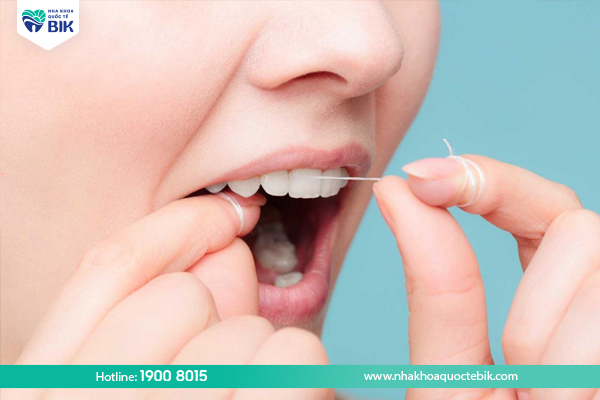
Tooth decay in the tooth space affects the aesthetics and health of the teeth. When detecting tooth decay, find a safe and quick treatment. To be sure, visit and get advice from a professional dentist.

